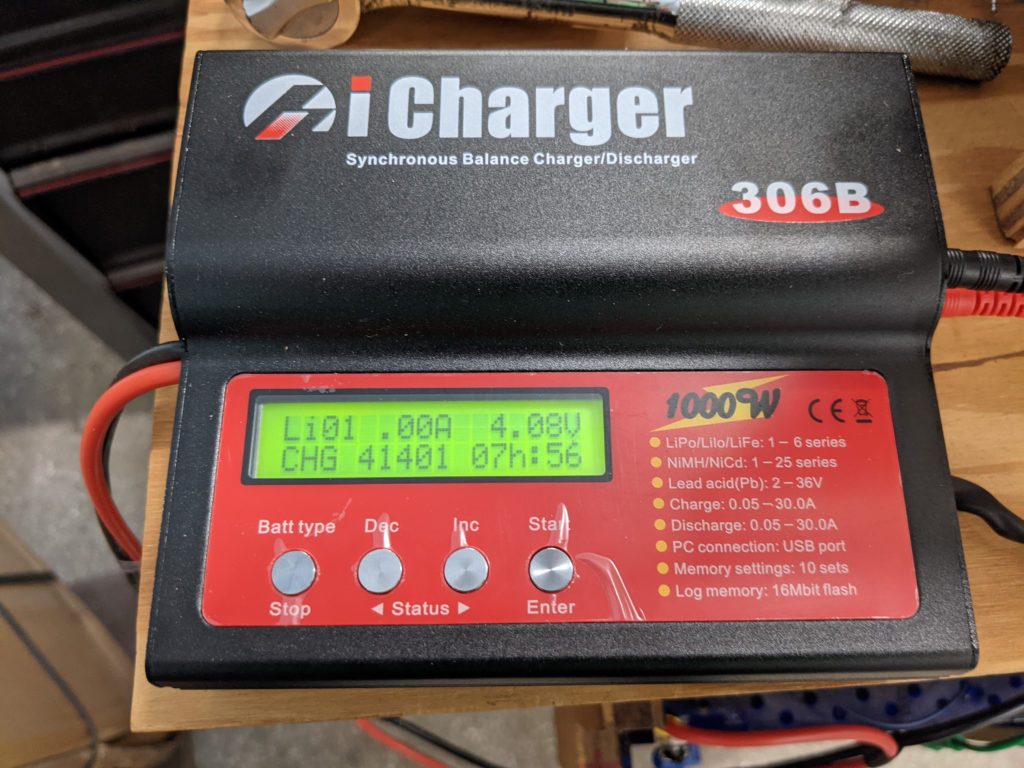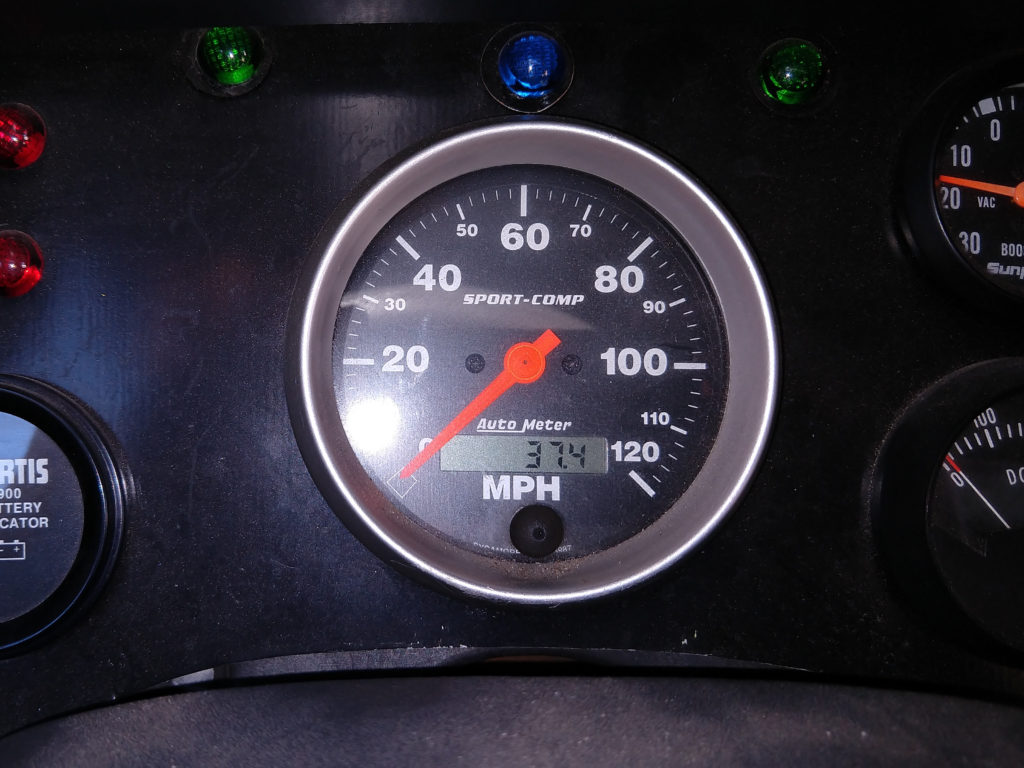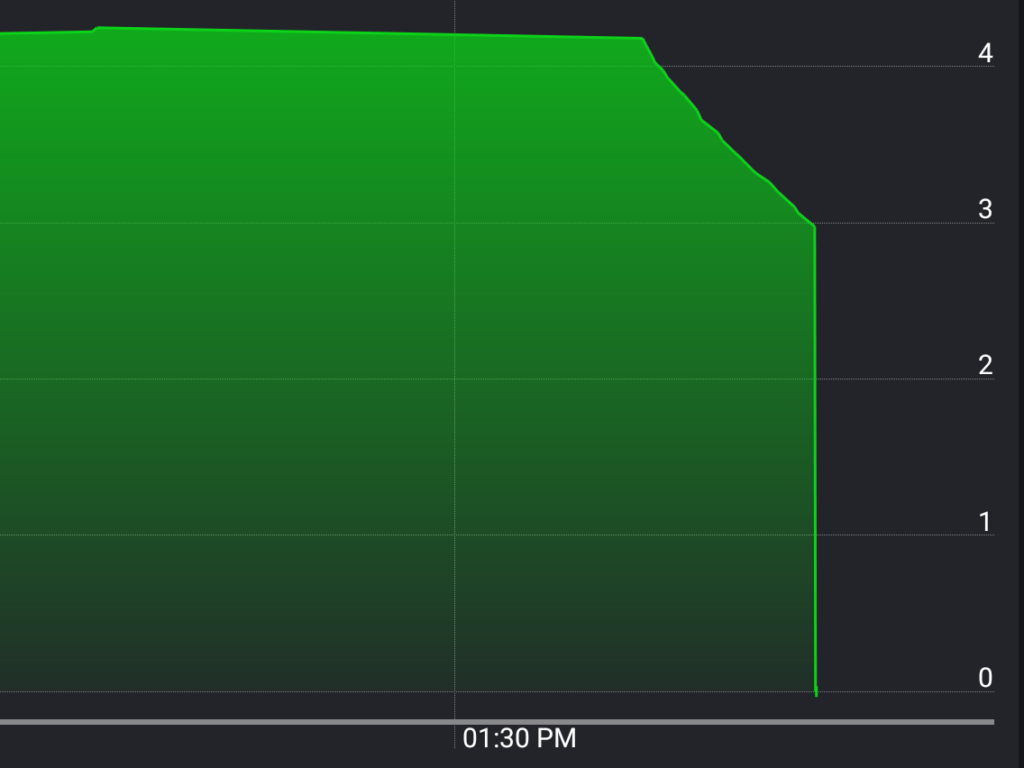
iCharger 306B used for balance charging, and capacity test discharging my Nissan Leaf Modules.
When operating my electric S-10 pickup truck that used 48 salvage Nissan Leaf battery modules, the miniBMS system was able to shut down the charger when any module got to the high voltage shutoff (4.2 volts) point, and sound an alarm when any module got too low (telling me to stop driving and start charging immediately!), but it didn’t do a good job keeping the modules in balance. While they were in the truck, I would occasionally have to manually attach a bench power supply to a few of the low modules (or attach a big resistor to any modules that were too high) to manually balance them.
This worked OK for the most part, and I only had to do it every few months. Over the summer of 2020 while the truck was parked long term during the covid-19 pandemic, one of my miniBMS modules died in such a way that it brought one cell (1/2 of a module) down to zero volts. Needless to say, after that happened that particular cell was never the same, and always the weakest cell in the pack. [In this case, because I used the modules in parallel sets of 3, it was actually 1/2 of three Leaf modules….]
When I sold the truck (but kept the batteries) I knew I would have to balance and capacity test those particular modules. After looking around, I decided on the $160 iCharger 306B unit for this job. It is a Radio Controlled (RC) aircraft battery charger, but has enough power capacity (30 amps charging or discharging if you have a battery bank to regeneratively discharge back into) to be able to discharge a Leaf Module (60-63 AH brand new) in 2 hours. [Charging takes longer, as the leaf module starts to accept less than 30 amps as it reaches the upper end of its voltage range…] It also didn’t bat an eye at a charge or discharge capacity limit of 60 AH, which is significantly larger than many RC aircraft batteries.
Another feature I liked about this unit is that it supports the open source DataExplorer logging and graphing software, so if I wanted to I could graph the charge/discharge curves. [In my normal usage, just having the AH capacity value for the battery is all I really needed, and that number I can read right off the charger’s display…but its nice to know it supports second by second logging if I need that for something else.]
I also like the ability to regeneratively discharge back into the source battery, as it cuts down the heat output and saves 80-90% of the power to use on my next module. To use this charger/discharger on more than one cell at a time [a Nissan Leaf module is made up of two cells in series…well, actually, four 30AH cells in a 2p2s configuration that acts like two 60AH cells in series….] you will need to build a cable that connects the sense terminal (as well as the + and – terminals) to the chargers 2S balance port.
Here is a video showing the iCharger 306B in action:
Discharging Settings:

Regenerative DSC – The iCharger 306B needs a place to put the power it’s pulling out of your battery (it can only drop 80 watts using internal resistance) so you either need to be operating off of an input source that can be back-fed (a battery to recharge) or use a resistor in-line with the unit (which means you can’t charge the cell back up until you remove the resistor, so I suggest operating off of an input battery bank). You must turn this setting on if you have an input battery and want to put power back into it.
When you turn this on, you need to set an amp limit (I used 30 amps) and a voltage limit appropriate for your input battery. I used a 16.5 volt upper limit for my battery, or 4.125 volts per cell. [Assuming you charge every module you discharge, your input battery will still gradually drop in charge, you really only need the upper voltage limit if you start with a discharge and a full input battery…]
Safety Timer – Good for discharging, but the charging time is much longer, so I didn’t end up using it as I would have to change it between every charge/discharge cycle.
Capacity Cut-off – I set this to 60 AH (60,000 mAh) initially, then backed down to 50,000 mAH once I determined that most of my modules had around 46-48 AH of capacity.
Discharge Reduce – If you turn this on at 50%, it will reduce the amp draw when the first cell hits the low voltage discharge limit and not actually stop the discharge until the amp draw is 50% of the starting amp draw. For Nissan Leaf modules, a 30 amp discharge is already a 1/2 C rate, so waiting until you get down to 1/4 C isn’t going to get you much more capacity out of the cell.
My Charging Settings:
Input Limit – I left this at 50 amps max draw because I knew my battery could handle that, but set the voltage cutoff at 15 volts for my 16v nominal Nissan Leaf battery pack (3.75 volts per cell). In actual operation, it never draws more than 16 amps from my 16 volt battery pack when charging an 8 volt battery at 30 amps.
Li Ion Balance On – Always (as opposed to just when reaching the storage voltage or CV phase.
Balance Speed – Slow – This sets the ending current to your max current / 40
Balance Trickle – Off (unless you have a LOT of time on your hands)
LiPo/LiLo termination voltages – If you don’t like the default charge termination voltages, you can tweak them here. I set my LiPo termination voltage to 4.17 volts, as I don’t like hitting the 4.20 absolute maximum. In actual practice, I found that the ending voltage of my modules were closer to 4.16 volts with this setting….either that, or my multi-meter is 0.01 volts off…..
Tips & Tricks:
FAST CHARGE isn’t any faster than regular CHARGE in the constant current phase (where you are putting in the maximum 30 amps). The only difference is that it stops charging sooner (at a higher amp draw) than the regular CHARGE in the constant voltage phase. I prefer to use the regular CHARGE setting as it gets the batteries closer to my programmed ending voltage, but if you feel a need for speed and want to live dangerously, you could set the termination voltage a bit higher and use the Fast Charge setting under the assumption that it would stop a bit before the termination voltage.
The iCharger can only balance at up to 1/2 amp (500mA), so if you have a Nissan Leaf module where the two halves are well out of balance, the fastest way to charge it is to use balance charge up until the amp draw falls below 10 amps, and then switch to charging each half of the module on it’s own, starting at 10 amps. [I do not know the actual amp rating for the center balance terminal, so I’ve been using 10 amps on that. It LOOKS like it could easily support 30 Amps (I know the end terminals can support 100+ amps) but I don’t know how the internal connections look.]



